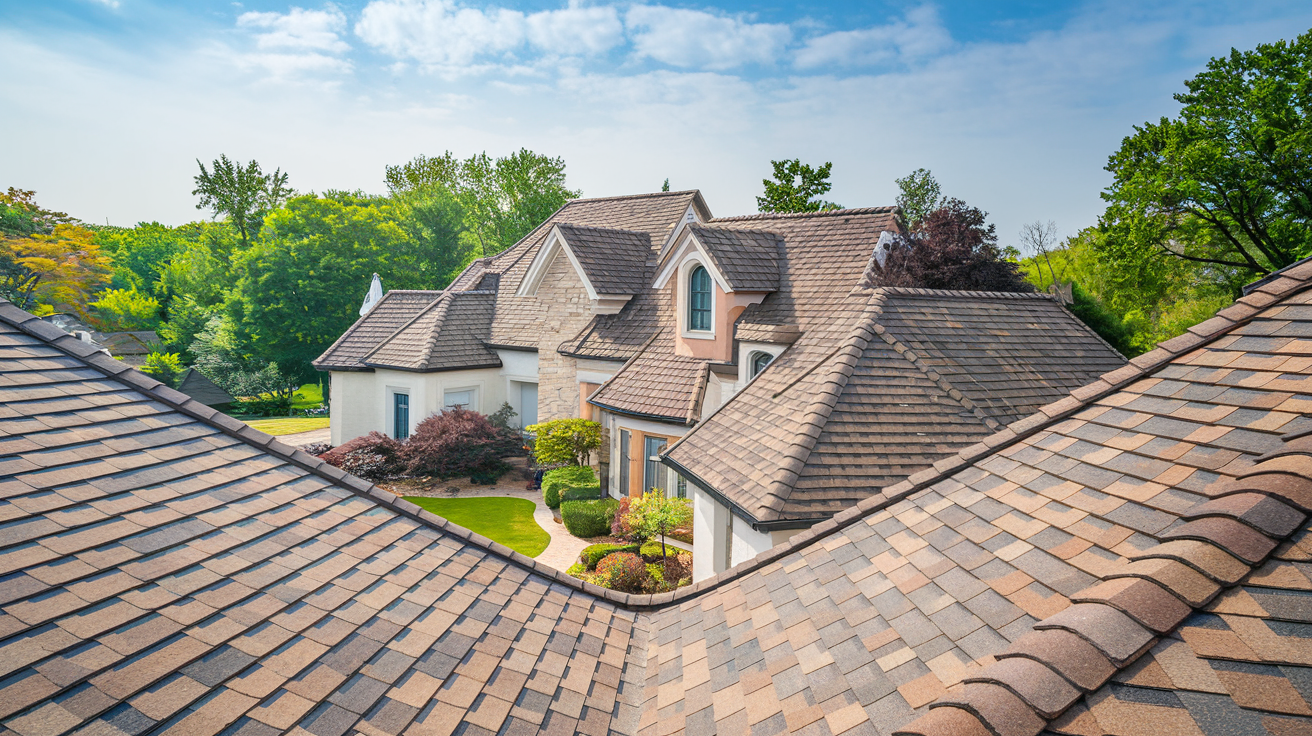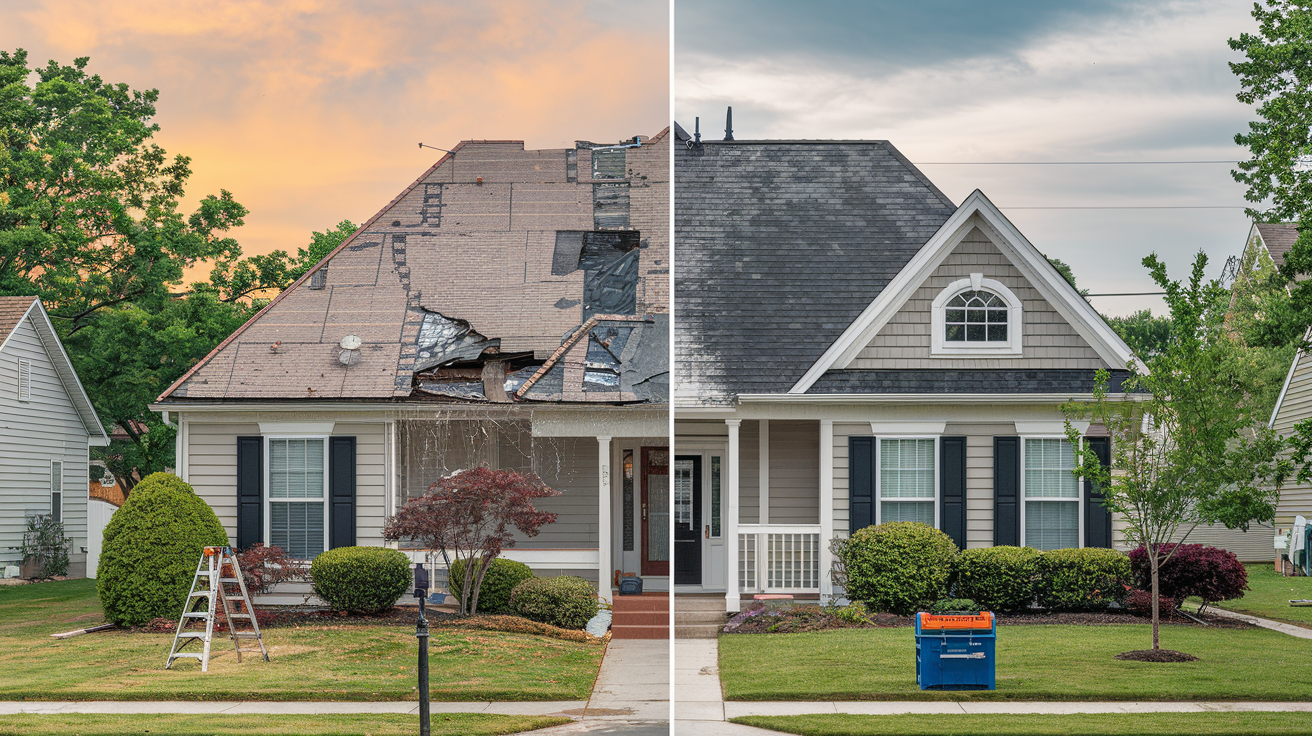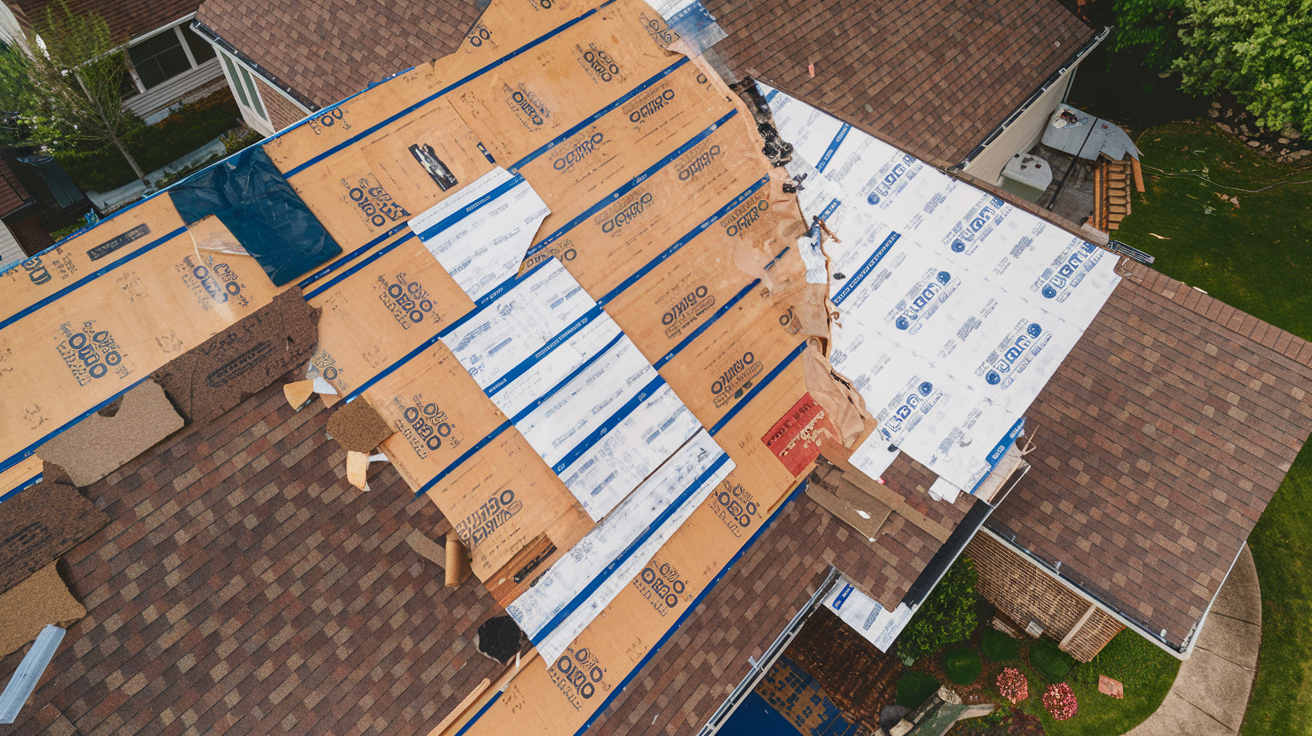10 Critical Signs of a Failing Roof: Save Thousands in Repair Costs
Every year, over 5 million American homeowners face the daunting challenge of major roof repairs or replacements. What starts as a small leak or a few missing shingles can quickly escalate into thousands of dollars in structural damage. The average roof repair costs between $379 to $1,755, but waiting too long can force a complete replacement—averaging over $9,000.
Your roof is your home's first line of defense against the elements, yet many homeowners miss the early warning signs of failure. Understanding these signals isn't just about preventing leaks—it's about protecting your entire home's structural integrity and your family's safety. From subtle water stains to more obvious signs like missing shingles, catching problems early can save you significant time and money.
In this comprehensive guide, you'll learn how to spot the critical signs of a failing roof, understand when repairs are sufficient versus when replacement is necessary, and discover practical steps to extend your roof's lifespan. We'll walk you through both DIY inspection tips and when to call in the professionals, helping you make informed decisions about one of your home's most crucial components.
- Understanding the Importance of Roof Maintenance
- Common Signs of a Failing Roof
- Conducting a Roof Inspection
- Preventative Measures and Repairs
- Planning for Roof Replacement
Understanding the Importance of Roof Maintenance
Maintaining your roof is one of the most crucial aspects of homeownership. Many homeowners neglect their roofs until significant problems arise. A well-maintained roof safeguards your home against various weather conditions, such as heat, cold, rain, and hail. It also helps conserve energy and enhances your home's aesthetic appeal. Ignoring roof maintenance can lead to severe issues, which may be costly to repair and potentially damage your home's structural integrity. This section delves into the importance of regular inspections and the repercussions of neglecting roof issues.

Why Regular Inspections Are Crucial
Regular roof inspections are vital for early problem detection, preventing minor issues from escalating into major ones. By scheduling routine inspections, you can identify and rectify minor damage, such as missing shingles, small leaks, or granule loss. These are common indicators of wear and tear. For instance, missing shingles may suggest wind damage or an aging roof. Prompt repairs can avert leaks. Excessive granule loss might indicate that your roof is aging and requires attention. Identifying these problems early can save money by avoiding extensive repairs or replacements. Regular maintenance can also prolong your roof's lifespan, saving money and protecting your home from adverse weather. Addressing wear and tear proactively prevents minor issues, like a few cracked shingles, from becoming significant problems, such as a complete roof replacement. This includes fixing sealant and flashing issues before they result in leaks and moisture buildup, which can damage the roof deck and potentially cause collapses. Consider scheduling a roof assessment to proactively identify potential issues.
The Consequences of Ignoring Roof Issues
Neglecting roof problems can lead to numerous issues affecting your home's safety and finances. For example, leaks can cause moisture buildup, leading to mold and structural damage. Structural damage might include weakened rafters, rotting wood, or damage to your ceilings and walls. Water damage in the attic often results from roof leaks caused by cracks, damaged shingles, or missing flashing, allowing water intrusion. This poses health risks and can result in expensive repairs. Damaged or missing shingles can exacerbate weather-related damage, increasing the risk of roof collapses or significant water intrusion. Learn more about roof maintenance to understand how to prevent these issues. Roof repair costs homeowners around $379 to $1,755, averaging $1,067. Replacing a whole roof can be considerably more expensive, averaging around $9,191. Ignoring minor problems can necessitate a full roof replacement, which is costly and time-consuming. A full roof replacement costs, on average, $9,191. You might require a full replacement if the damage is extensive or your roof is old. A repair might suffice if you only have a few missing shingles. A repair is generally cheaper than a full replacement. For example, if you notice some missing or cracked shingles after a storm, a repair might resolve the issue. However, if your roof is old and exhibits many signs of wear and tear, like curling shingles, sagging areas, or significant granule loss, you might need a new roof.

Common Signs of a Failing Roof
Identifying early signs of a failing roof is crucial to prevent costly repairs and potential damage to your home. A roof serves as a home's primary defense against the elements. Even minor issues can quickly escalate if left unchecked. Understanding these signs empowers homeowners to take timely action and protect their investment. Below, we explore the most common indicators of a failing roof and how factors like weather impact roof health. Consider scheduling a Get Your Roof Assessment to proactively identify potential issues.
Leaks and Water Damage
Water damage is often the first visible sign of roof failure. Leaks appear as water stains on ceilings or walls. By the time these are noticeable, significant damage may already have occurred to the roof structure and insulation. This hidden damage might include rotted wood or damaged insulation, leading to increased repair costs.
Missing or Damaged Shingles
Shingles are vital to your roof's protective layer. Their condition reflects the overall roof health. Missing or damaged shingles expose underlying roof materials to the elements, causing leaks and further damage.
- - Wind
- - Hail
- - Aging
Sagging Roof Deck
A sagging roof deck is a serious structural issue. It can result from inadequate internal bracing or undersized rafters. Prolonged moisture exposure can also weaken structural components, causing sagging. This appears as a visible dip or curve in the roofline. Any sagging requires professional inspection. A roofing professional can assess and address the underlying cause to prevent potential collapse.
Granule Loss and Bald Spots
Shingle granules protect against the sun and extend roof lifespan. Over time, granules wear away, creating bald spots. Granule loss is a normal part of aging, but excessive loss signals the roof's end-of-life. Granules often accumulate in gutters or downspouts. They act as a reflective barrier, minimizing heat absorption. Regularly check these areas for granule buildup, an early warning sign of shingle deterioration.
Conducting a Roof Inspection
A thorough roof inspection is crucial for protecting your home and preventing costly repairs. Identifying potential problems early can save you money and extend the life of your roof. This section offers tips for conducting your own inspection, explains when to call a professional, and highlights key visual cues of roof damage.
DIY Roof Inspection Tips
This subsection provides actionable tips for inspecting your roof yourself. Start by examining your roof from the ground using binoculars. Look for obvious signs of damage, such as missing, curling, or peeling shingles. Curling and peeling often indicate wind damage. Wind damage can also cause loose shingles, chimney problems, and damage to the soffit or fascia (the underside of your roof overhang). Check for moss or algae growth, a sign of moisture problems and potential leaks. Sealant and flashing failures are also common sources of moisture issues. Inspect your gutters and downspouts for excessive shingle granules. While some granule loss is normal, a large amount can signal that your roof is nearing the end of its lifespan. Safety is paramount. Never climb onto your roof unless you are comfortable doing so safely. If you are unsure, contact a professional roofing contractor. For an AI-powered analysis of your roof's condition, consider Get Your Roof Assessment.
When to Call a Professional
While DIY inspections are helpful, some situations require a professional's expertise. Call a professional if you see sagging (such as bowing sheathing between rafters), multiple leaks, or large areas of missing shingles. Professionals can identify hidden issues, like moisture damage or structural problems, that are often invisible to the untrained eye. Interior water stains and leaks also require professional attention. They can accurately diagnose the problem and recommend the best course of action. Regular professional inspections are recommended every few years, especially after severe weather, which is responsible for an estimated 70-90% of insured residential catastrophic losses. Professionals can determine your roof's age, a crucial factor in assessing its condition, even though precise determination can be difficult. Knowing your roof's age helps decide between repair and replacement, which averages around $9,000. To learn more about roof maintenance, visit our comprehensive guide.
Visual Cues to Look for Inside and Outside the Home
Inside your home, check for water stains on ceilings and walls, which often suggest leaks. While water stains don't always indicate a roof leak (plumbing leaks and condensation are other possible causes), they should always be investigated. Mold or mildew in the attic or upper floors signifies moisture intrusion, often pointing to a roof leak requiring immediate action. Outside, look for curling, cracking, or missing shingles, and check gutters for excessive shingle granules. Inspect the flashing around chimneys and vents to ensure it's intact and preventing water entry. Also, check for sagging areas, particularly between rafters, as this could indicate structural damage. Damaged vents and flashing often accompany deteriorated or missing shingles and warrant close inspection. By regularly monitoring these visual cues, you can identify problems early and minimize potential damage.
Preventative Measures and Repairs
A failing roof can lead to serious structural damage and costly repairs. Understanding preventative measures and repair strategies can save homeowners time, money, and stress. Regular maintenance, timely repairs, and proactive long-term solutions are key to extending your roof's lifespan. These strategies help ensure your home remains safe and secure.
Regular Maintenance Practices
Routine maintenance prevents small issues from becoming major problems. Bi-annual inspections, ideally in spring and fall, help identify potential issues early.
What to Look For During Inspections
- Check for loose or missing shingles. These can indicate wind damage or age deterioration.
- Inspect the attic for water damage. Look for water stains, mold, or mildew, which signal leaks or inadequate ventilation.
- Ensure gutters and downspouts are clear of debris.
Quick Fixes for Minor Issues
Addressing minor issues promptly prevents them from becoming costly.
Examples of Minor Roof Repairs
- Replace missing or damaged shingles immediately. This prevents water infiltration and further damage. Replacement shingles are available at most home improvement stores.
- Use roofing cement or sealant to fix small leaks and seal cracks around vents and chimneys. A small tube of sealant is usually sufficient for minor repairs.
Most homeowners can handle these quick fixes with minimal tools and materials. If you are unsure about the damage, consult a professional for correct repairs. For larger issues like sagging areas or widespread granule loss, consult a roofing professional. Get Your Roof Assessment
Long-term Solutions for Major Problems
Long-term solutions are necessary for severe issues like widespread shingle damage or persistent leaks.
When to Consider Long-Term Solutions
Consider a long-term solution if repairs become frequent or the damage affects a large area. For example, persistent leaks or widespread shingle damage may require a full roof replacement. Roof replacement is a significant investment, but it can be more cost-effective than repeated repairs. The average cost is around $9,000, varying by material and roof size. Roughly 5 million roofs are installed annually.

Planning for Roof Replacement
Planning for a roof replacement can seem overwhelming, but it's a crucial step in protecting your home. A well-timed replacement safeguards your property and can also boost its value. Understanding the key factors helps homeowners make informed decisions. From assessing your roof's condition to choosing the right contractor, each step ensures a successful replacement. Let's explore the essentials of planning for a roof replacement.
Evaluating the Age and Condition of Your Roof
Determining your roof's age and condition is the first step. Roofs have an estimated lifespan, often based on material and environment. This lifespan is an estimate, not a guarantee. For example, asphalt shingles, used in roughly 75% of U.S. roofing projects, typically last 20–25 years. Visible signs of aging, like missing shingles and attic water stains, can signal a needed replacement. Other signs include curling or cracked shingles, sagging areas, or granule loss. These granules protect shingles from the sun, so their loss is a warning. If your roof shows these signs and is nearing its lifespan, start planning. Accurately determining roof age can be difficult, even for experts. This difficulty emphasizes the importance of a thorough inspection focusing on the roof's condition, not just its age. Consider using our Get Your Roof Assessment for a comprehensive evaluation.
Cost Considerations and Budget Planning
Cost is a major factor. A roof replacement costs around $9,191 on average, but this varies based on materials, roof size, and location. About 5 million roofs are installed yearly, showing how common this project is. This high volume also means many contractors are available. Roof repairs typically cost less, ranging from $379 to $1,755, but might not be a long-term fix. Repairing a roof usually involves fixing specific issues like leaks, making it cheaper than full replacement. However, frequent or extensive repairs may mean replacement is more cost-effective. Budgeting involves understanding these costs. Get quotes from multiple contractors to compare prices and financing. Comparing quotes helps you see what each estimate includes. Explore insurance options. Your roof might be insured at actual cash value (ACV), which includes depreciation, or replacement cost value (RCV), without depreciation.
Selecting the Right Materials for Your Climate
Choosing suitable roofing materials is vital for your roof's lifespan. Different weather conditions impact material durability. Location affects a roof's lifespan and potential damage types. Asphalt shingles might suit moderate climates, while metal or tile roofs might be better for extreme weather. Metal roofs resist fire and high winds, while tile roofs protect against impact and heat. In Northern areas, sun exposure and heavy winter rains are key concerns. Learn more about roof maintenance for various materials. Assess your local climate and consult roofers to determine the best materials. This impacts lifespan, energy efficiency, and maintenance. Some materials reflect sunlight better, lowering cooling costs.
Choosing the Right Contractors for the Job
Selecting the right contractor ensures a quality replacement. A reputable contractor provides a detailed estimate, references, and a proven track record. A detailed estimate should list all costs, including materials, labor, and permits. Verify licensing and insurance to protect yourself. Licensing ensures competency, and insurance covers accidents or damage. Read reviews and ask for recommendations. Online reviews and referrals offer insights into reliability and workmanship. A skilled contractor will work efficiently and guide you through material selection and other key decisions. They can advise on the best materials for your climate and budget. Choosing the right contractor significantly impacts your roof replacement project. A good contractor saves you money and hassle.
Disclaimer: This blog post is intended for informational purposes only and should not be considered professional roofing advice. Always consult with qualified roofing contractors and insurance professionals for specific guidance regarding your individual circumstances.
